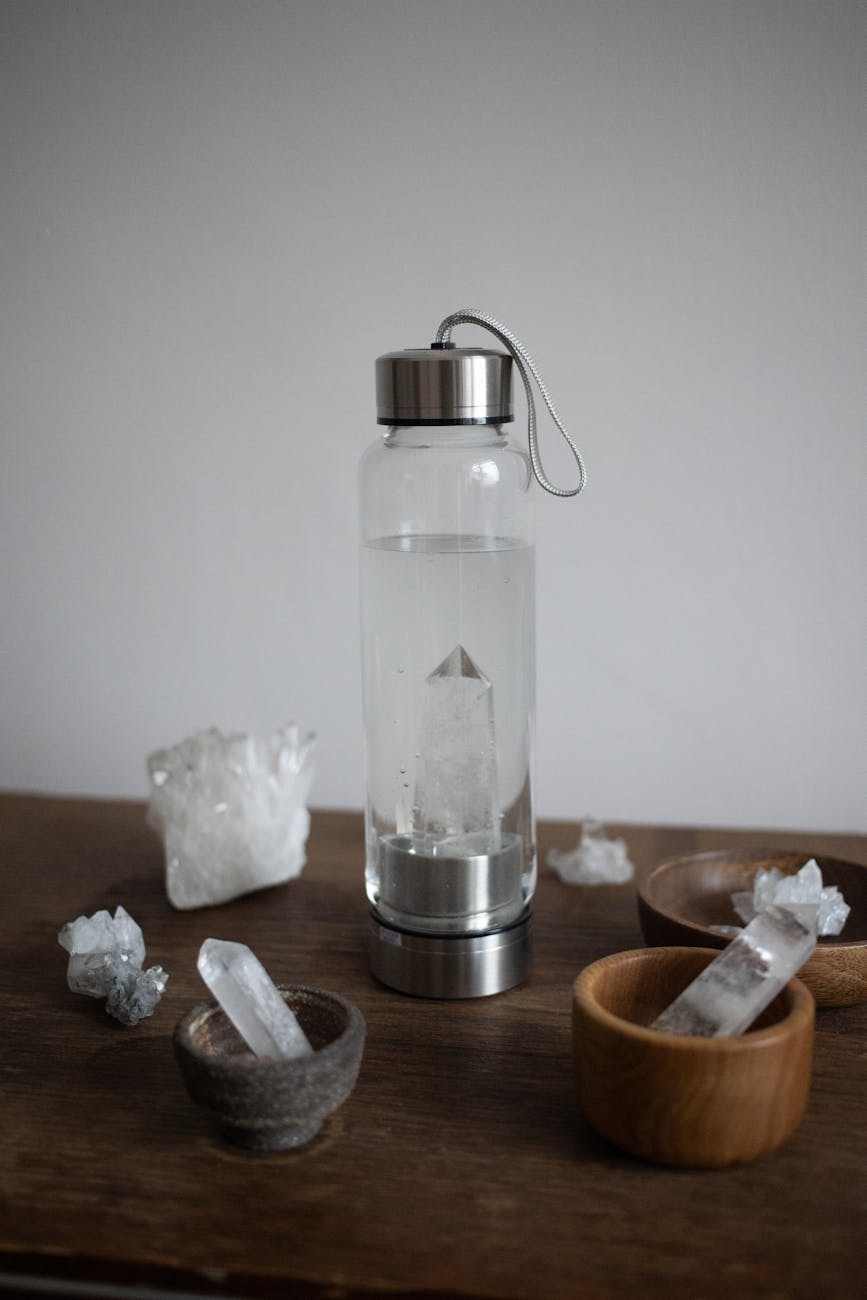I counted how many products I use every day in my beauty routine and, although I’m a minimalist, still came up with a total of 15. This doesn’t include the other products I use around my home, like laundry and cleaning products.

In a world where skincare and cosmetics play a significant role in our daily routines, it’s crucial to understand the impact these products can have on our health, particularly hormones. Even the smallest amount of fragrance in one, preservatives in another, dyes, foaming agents and colourings in the rest, can add up. You might think, “The product must be safe if it’s being sold“, and it might be if it’s a stand-alone product. But, if you add that product to the 14+ others you can’t go without in a day, the compounding effect of chemicals is what we need to look at. Here is why:
How do chemicals get into your body and why does it matter?
- Your skin is your largest organ and absorbs a lot of what you put on it, soak in and touch. Sure, the skin acts as a barrier, but it does also have the potential to absorb particular particles
- On average, we use 12 personal care products each day and the chemicals add up with repeated, daily application
- The personal care industry uses over 10k chemicals in manufacturing, to extend the shelf life, add fragrance, consistency and lather to products
- Your liver has to process and eliminate chemicals, and this can add up over time. When your “toxic load” is reached, symptoms appear
- Your lungs are a pathway to inhale chemicals found in your home, like scented dryer sheets, scented candles, air fresheners, cleaning products
- Chemicals are stored in your adipose cells and are very difficult to break down and excrete
- Some chemicals are eye irritants, skin and respiratory irritants and hormone disruptors
Where chemicals could be hiding in your daily skin care products
- Toothpaste: may contain flouride, colour, preservatives, foaming agents
- Shampoo: may contain foaming agents, preservatives, fragrance, dyes
- Tampons: may contain bleach, fragrance, plastics in packaging
- Cosmetics: may contain colour, fragrance, preservatives, harmful plastics in packaging
- Bubble bath: may contain colour, fragrance, foaming agents
- Hair products: may contain fragrance, airborne chemicals
- Soap: may contain fragrance, foaming agents, colour, plastics in packaging
- Packaging: could contain BPA, propylene glycol

How this all affects your hormones
Chemical invaders, masquerading as harmless additives and botanical essences, have the audacity to mimic or meddle with our body’s meticulously tuned hormonal symphony. The consequences? A domino effect of disruption across our entire endocrine system, potentially affecting our natural rhythms, reproductive organs, thyroid, and an unwelcome risk of certain cancers. Hormones don’t work alone, so if one is affected, they all are. This is no scare tactic; it’s a call to arms. An invitation to start reading labels and take inventory of what could be adding to your toxic load.
Xenoestrogens, synthetic compound that can mimic estrogen, get stored and build up in our adipose (fat) cells. With repeated exposure, these endocrine disrupting chemicals can interfere with the synthesis, secretion, transport, binding, action, or elimination of natural hormones in the body that are responsible for the development, behavior, fertility and maintenance of homeostasis
Top 10 chemicals to avoid
- Artificial colour: contaminated with heavy metals; toxic to the brain. Used as food dyes, in cosmetics, personal care and cleaning products. Can cause allergies, irritability, neurological disorders
- Propylene Glycol: a by-product of fossil fuel that is considered a “probable carcinogen”. Used in plastics, as a food additive, a smoothing agent in cigarettes and moisturizers. It is a skin irritant, affects the respiratory, cardiovascular and neurological systems
- DEA (diethanolamine): used as a foaming agent. Causes eye and skin irritation, is stored in breast tissue, and is classified as a “possible human carcinogen”
- Parabens (Propyl, Methly, Butyl): used as a preservative in personal care, cosmetics and food. An endocrine disruptor (esp females) as it mimics estrogen. Increases the risk of cancer, and is linked to reproductive issues in men (low sperm count and low testosterone)
- Fragrance: can contain hundred of chemicals, even “unscented” is a fragrance to mask the smell of raw ingredients. Can trigger allergies, asthma and migraines. Has been associated with cancer in lab animals and hormone disruption
- SLS (sodium lauryl/laureth sulfate): a foaming agent found in soaps, shampoo, bubble bath, cleaners. A known carcinogen, respiratory, skin and eye irritant
- Phthalates: found in perfumes, plastics, nail polish. An endocrine disruptor (esp males) and carcinogen
- Formaldehyde: is illegal but can hide in small amounts in other ingredients. Can hide in your home in wallpaper, paint, pressed wood, cosmetics and personal care products. A known carcinogen, eye and skin irritant
- Petrolatum: used as a barrier to lock in moisture but does not allow skin to breathe or release toxins. Carcinogenic over long periods of time
- Triclosan: an antibacterial agent in antiperspirant, hand sanitizer, cleaning products, toothpaste. Can penetrate skin, cause resistance to bacteria, disrupt hormones, irritate eyes and skin
The Environmental Working Group is an excellent resource for chemicals to avoid and what some safer options are.
How to choose healthier options
Seek out the products labeled free from synthetic fragrances, parabens, dyes, foaming agents, phthalates, from companies who have pledged allegiance to the cause of clean, cruelty-free and transparent beauty. Many companies today are moving in the right direction, including ingredients that come from the earth—rich in nutrients, free from animal cruelty, and harmful packaging.

If you are up to the challenge to reduce your toxic load, start here:
- Take inventory of how many products you use in a day
- After doing some research, write down potentially harmful ingredients you find in each one. You can find ingredient lists online if you no longer have the original packaging or box. You can use apps, like YUKA, Think Dirty, or dig deeper into effects of ingredients on the Environmental Working Group website
- Decide where you can make big changes. If you find that most of your products contain any of the potentially harmful ingredients from our list, seek out alternatives
- Make note of any changes you might see or feel over time in areas like breathing, allergy symptoms, rashes, dryness, cysts, menstrual cycle, thyroid, and brain fog to name a few









Leave a comment